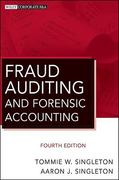Question 1 - Ricardian Model of Trade 15 marks (3+3+3+3+3) Suppose two economies Home (H) and Foreign (F) produce two goods, bread and wine, with only one production factor: labour. Production technology, expressed in unit labour requirements, are given in the following table: Units of labour required to produce one unit of output Bread Wine Home 3 6 Foreign 2 1 I Suppose that Home has 2400 units of labour and foreign has 1800 units of labour. a. (3 marks) Derive the Production Possibilities Frontier (PPF) and the Consumption Possibility Frontier (CPF) for Home and Foreign, with bread on the horizontal axis and wine on the vertical axis. What is the autarky equilibrium price of bred relative to wine in each country? b. (3 marks) What country has the absolute advantage in producing each good? What country has the comparative advantage in producing each good? Briefly explain the difference between these two concepts. C. (3 marks) Suppose both countries are now free to trade. Draw a graph depicting the global market of bread and wine with the relative price of bread on the vertical access and the relative quantity of bread on the horizontal axis. Assume the relative demand curve (RD) is given and it intersects the relative supply curve (RS) at a relative price of bread of 1. Note that this is a point in between the two relative prices in autarky in each country. d. (3 marks) Now suppose these countries trade with each at the equilibrium relative world price of bread. What is the pattern of specialisation and trade? Why? e. (3 marks) To the graphs you drew in point (a) add the CPF after free trade. Which country gains from free trade according to Ricardian Model. Why? Question 1 - Ricardian Model of Trade 15 marks (3+3+3+3+3) Suppose two economies Home (H) and Foreign (F) produce two goods, bread and wine, with only one production factor: labour. Production technology, expressed in unit labour requirements, are given in the following table: Units of labour required to produce one unit of output Bread Wine Home 3 6 Foreign 2 1 I Suppose that Home has 2400 units of labour and foreign has 1800 units of labour. a. (3 marks) Derive the Production Possibilities Frontier (PPF) and the Consumption Possibility Frontier (CPF) for Home and Foreign, with bread on the horizontal axis and wine on the vertical axis. What is the autarky equilibrium price of bred relative to wine in each country? b. (3 marks) What country has the absolute advantage in producing each good? What country has the comparative advantage in producing each good? Briefly explain the difference between these two concepts. C. (3 marks) Suppose both countries are now free to trade. Draw a graph depicting the global market of bread and wine with the relative price of bread on the vertical access and the relative quantity of bread on the horizontal axis. Assume the relative demand curve (RD) is given and it intersects the relative supply curve (RS) at a relative price of bread of 1. Note that this is a point in between the two relative prices in autarky in each country. d. (3 marks) Now suppose these countries trade with each at the equilibrium relative world price of bread. What is the pattern of specialisation and trade? Why? e. (3 marks) To the graphs you drew in point (a) add the CPF after free trade. Which country gains from free trade according to Ricardian Model. Why







